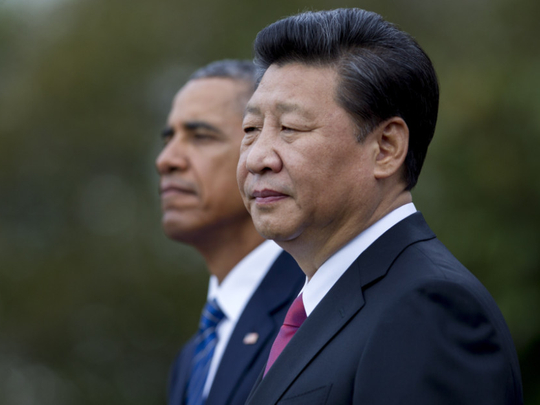
American and Chinese presidents do not really know how to talk to each other. They are like computers running on different operating systems.”
That was the verdict once offered to me by a US official, who has watched many US-China summits from close quarters. So while both sides stress that last week’s meeting between Presidents Xi Jinping and Barack Obama was constructive, I have my doubts. For China and America have profoundly different ways of looking at the world. I see five big contrasts.
1. Cyclical vs linear: China has a very long history. The US has a very short history. Xi likes to point out that “China is an ancient civilisation. We have 5,000 years of history”. The US, on the other hand, has been in existence for less than 250 years. This difference in perspective has a profound effect on the way that the two countries’ leaderships think about the world. Broadly speaking, the Chinese think in cyclical terms, since Chinese history is defined by the rise and fall of dynasties. Good periods that can last centuries are followed by bad periods that can also last for centuries. By contrast, ever since 1776, the US has basically only travelled in one direction — towards greater national power and personal prosperity. As a result, US politicians tend to think of history in a linear fashion and to believe in progress as the natural order.
2. Universalism vs particularism: America’s founding creed is that “all men are created equal” and have the same unalienable rights. From this flows the instinctive American belief in universal values such as freedom and democracy — that should, ideally, be applied everywhere. The Chinese, by contrast, are particularists. They believe that what is right for China is not necessarily right for the world, and vice versa. This difference in mentality underpins America and China’s contrasting approaches to intervention in foreign conflicts and the protection of human rights .
3. Ideology vs ethnicity: The American state is built around the ideas embodied in the Declaration of Independence and the Constitution. Millions of people have become Americans by living in the US and embracing those ideas. By contrast, China has a much more ethnically based view of what it means to be Chinese. If I moved to the US, I could become “American” fairly swiftly and my children would certainly be Americans. But moving to China would not make me or my children Chinese. As a result, the Chinese and Americans tend to have rather different assumptions about crucial ideas such as nationhood, citizenship and immigration.
4. Individual vs community: American leaders stress the rights of the individual. Chinese leaders stress the interests of the community. The difference between American individualism and Chinese communitarianism filters into their attitudes to the state. In the US, the ideas that the individual needs to be protected against an over-mighty state is built into the constitution and into political rhetoric. In China, it is more normal to argue that a strong state is the best guarantee against “chaos” that has led, in the past, to civil war and bloodshed. Many Americans assume that this Chinese rhetoric simply reflects the self-interest of the Communist party. But it also has deep historical roots. Americans might trace their emphasis on individual rights to the War of Independence in the 18th century. By contrast, in stressing the need for a strong state, Chinese leaders unselfconsciously refer to the “Warring States” period, which began in 476BC.
5. Rights vs hierarchy: Different attitudes to the state lead to contrasting views of what holds a society together. Americans stress individual rights and the law. But while there is now much more talk in China of the need for strengthened “rule of law”, the Communist party is also promoting the Confucian tradition, which stresses a sense of hierarchy and obligation, as crucial to the smooth functioning of society. Once again, this has implications for international relations — since it affects China’s view of the proper relationship between big countries, such as China, and their smaller neighbours.
China’s sheer size has always shaped the way it views the outside world. But here, at last, is a strong similarity with the US. Both countries have something of a Middle Kingdom mentality. The idea of the Middle Kingdom is rooted in China’s past. One historian describes it as “the extraordinary conviction of the Chinese people that their land is the centre of everything”. This conviction was shaken, a little, by the “century of humiliation” that began in the 1840s, when European and Japanese imperialists defeated China in battle. But a resurgent China is now sometimes accused of returning to a Middle Kingdom mentality, particularly in its treatment of the rest of Asia.
The US, meanwhile, has become accustomed to its role as the world’s sole superpower. American foreign policy is still based on the belief that the US is the “indispensable power” in ensuring global order. American presidents, like Chinese emperors of old, are used to receiving extravagant tributes from foreigners.
It is comforting to discover that there is at least one respect in which China and America are very similar. The trouble is that while both countries may regard themselves as the “Middle Kingdom”, they cannot both be right.










